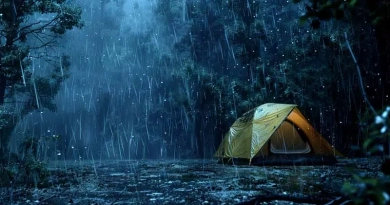
What are the best ways to find food in the wild?
Foraging Through Nature: Discovering Food in the Wild
Under the vast sky and amidst the whispering trees, I once found myself in the heart of a wilderness, miles away from civilization and grocery stores. Hunger started as a gentle reminder and grew into a pressing concern. It brought to mind a crucial survival skill I had often overlooked: “What are the best ways to find food in the wild?” It was a question of survival, not just of satisfying curiosity.
Navigating the Challenges of Wilderness Foraging
Finding food in the wilderness, a skill entwined with the very essence of human survival, carries with it not just the physical challenge of location but also the intellectual challenge of identification. Many foragers, both novice and experienced, can attest to the fundamental difficulty of distinguishing between what is nourishing and what is noxious. The wilderness is rife with plants and mushrooms, each harboring the potential to either sustain or end life. The line between edible and lethal is often thin and blurred, and one misstep in identification can lead to grave consequences, such as poisoning, which underscores the importance of a solid educational foundation in foraging.
Adding complexity to the endeavor is the variability of nature’s pantry. The availability of resources swings wildly with the seasons and the specific ecosystem in question. For example, what one might find in abundance in a temperate forest in spring—like morel mushrooms and wild garlic—differs vastly from what the same forest offers in autumn, such as nuts and late berries. Each ecosystem, from deserts to wetlands, presents unique foraging opportunities and challenges, demanding adaptability and extensive local knowledge from the forager.
A Panorama of Wild Food Sources
The spectrum of food sources in the wild is as vast as nature itself, ranging from the soil underfoot to the tree canopy overhead.
Plant Foraging: This is often the first step for many foragers. Edible greens like dandelion, which can be found almost everywhere from city parks to deep forests, and clover, are staples of wild salads. However, the real caloric gems lie underground in the roots of plants like wild carrots or burdocks. These roots require not only precise identification but also an understanding of the proper seasons for harvesting when nutrients are at their richest.
Fishing and Hunting: Moving from flora to fauna, streams and lakes offer rich fishing prospects. Even a simple handline and hook can yield a meal of fish, providing essential proteins and fats necessary for energy in survival situations. On land, hunting small game such as rabbits or squirrels offers a more substantial yield but requires more sophisticated skills in tracking and the use of equipment like snares or bows.
Insects: Often the most underestimated food source, insects like locusts, crickets, and ants offer a high-protein snack that is abundant and sustainable. They can be collected easily and prepared with minimal effort, making them a crucial resource in emergency survival situations.
Implementing Effective Foraging Strategies
The optimal strategy for successful wilderness foraging hinges on three pillars: knowledge, preparation, and respect for nature.
Knowledge: Education is paramount. Attending courses, reading books, and studying guides on edible plants and safe hunting practices build a strong foundation. A regional field guide is an indispensable tool for accurate identification on the go.
Preparation: Having the right tools can make a significant difference. For plant foraging, a good digging tool and gloves are essential. For fishing, a compact, durable fishing kit is necessary, and for hunting, knowing how to set and maintain snares is crucial.
Respect for Nature: Ethical foraging practices ensure sustainability. This means understanding and adhering to local wildlife regulations, foraging only what you need, and being mindful of the ecological impact of your activities. By respecting these guidelines, foragers help maintain the natural balance and ensure that the wilderness pantry remains stocked for future generations.
Foraging in the wild is a profound way to connect with nature, offering both sustenance and survival. It requires a balance of respect, knowledge, and preparation, challenging those who undertake it to be both students and stewards of the natural world. Whether one seeks to supplement a meal or survive an unexpected night under the stars, understanding how to safely and sustainably source food from the wild is an invaluable skill for any outdoor enthusiast.
Essential Tools for Wild Food Foraging
- Field guide: For accurate identification of plants and insects.
- Basic fishing kit: Compact and easy to carry.
- Knife: Essential for preparing food and crafting tools.
- Waterproof bags: For collecting and storing food.
- Sturdy gloves: Protect hands when foraging plants or handling insects.
As the sun set over the horizon, my modest meal of foraged berries, wild greens, and freshly caught fish reflected a profound connection to the land. Finding food in the wild is more than a survival skill; it’s a testament to human resilience and ingenuity. The experience taught me the importance of preparation, respect for nature, and the value of knowledge. Whether you’re an adventurer or a casual hiker, understanding how to sustainably source food in the wild can transform your outdoor experience, turning a potential survival situation into a rewarding communion with nature.






